Posted: 10 Jan 2014 05:00 AM PST
It was only a year ago that Pebble released its first smartwatch at
CES 2013. Now at this year’s event the company has launched its second generation model, the Pebble Steel.
At $100 more than the original, the Pebble Steel looks stylish and a little more like a traditional watch than
its predecessor, yet is still built around the high-end materials.
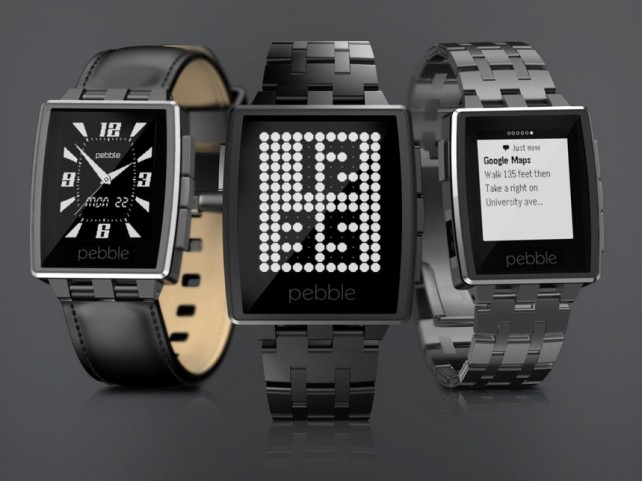
Eric Migicovsky, CEO for Pebble, has said that whereas the first smart watch
had a sporty feel, this time round the design has gone back to more classic aesthetics, with a steel-based look.
He added that the Steel is more suited to formal occasions, without compromising on practicality.
The hardier shell and Gorilla Glass screen give the impression of greater durability.
Pebble has come a long way since first releasing its smartwatch. The small company had never before been
to China, spoken to mass manufacturers or considered the implications of industrial design and production efficiency.
Yet here we are a year on, with Pebble users numbering over 300,000. Migicovsky says that
Steel’s design is a lot more modular, so if any parts are not produced to spec, then it is not
necessary to scrap the entire watch, proving that the company has learned a great deal on its journey.
The Pebble Steel comes in a choice of natural steel grey or black and comes with a leather strap
to match whichever colour you decide on. Included in the packaging is a full set of tools for
adjusting the new straps and a new magnetic charging plug. The whole thing just has a more premium feel.
The Steel is noticably smaller than the original, yet has the same display and is slightly heavier.
The company has also added an RGB LED to the front of the watch, which is used to display the
charging status, although this will be made available to app developers.
Internally the Steel remains pretty much the same. It has e-paper display, a battery and a memory that has
been increased to 8MB.
Migicovsky is hoping that in the future there will be more apps available to expand the Pebble Steel’s
functionality as a smartphone companion. Apparently more than half of the company’s staff are working
on software for the wearable devices and the CEO won’t stop “until we have Drugwars on the Pebble.”
[Image via ablogtowatch]
The post Pebble Unveils its Second Smartwatch, Pebble Steel appeared first on TechBeat.
|
|
Posted: 10 Jan 2014 04:00 AM PST
At CES’ Hardware Battlefield, H2 debuted its Health2Sync technology. This is a amalgamation of hardware
and software which is aimed at helping diabetes sufferers manage their glucose levels by providing them with a
digital solution to their physical problem.
Following one’s glucose levels is a tedious job, which always has to be done correctly. Writing down glucose readings
into a physical booklet isn’t very useful, as it is time consuming and being able to interpret the data is anyone’s
guesswork. On top of this, it is easy to forget and annoying to do. Patients who need to track their blood sugar
often don’t do it nearly enough as they should do.

That is where Health2Sync comes to the rescue. They want to change the process completely.
The firm has built an stylish hardware solution to make the process of tracking your blood sugar levels as
simple as possible. Basically, Health2Sync is a cable that plugs into the standard data port of most legacy
glucometers and into an iPhone or iPad audio jack. A small square is on the cable, allowing it to interpret the
data incoming from the glucometer. The resulting hardware and software collaboration, is a tool that allows a
user to sync their glucose readings quickly to their iOS device.
The client software for Health2Sync allows users to tag their various readings with useful categories:
When you took the reading (i.e., before or after a meal), what you ate, did you exercise etc. The user can also
set low and high bands for their blood sugar levels. Data from their various category readings are then plotted
for them, showing how often they meet, exceed, or fail in their desired blood sugar range. People with diabetes
can use their current glucometer in the manner they always have but with a daily Health2Sync data transfer,
they can quickly draw a picture of their blood sugar over time and that they can better understand the data.
Also, if they have permissions enabled, they can share the data with loved ones and caregivers.
Health2Sync has cuurently raised $300,000 and has an Indiegogo campaign up and running to
finance the capital costs of its first set of devices. The Health2Sync cable will retail for approx $35.
According to the company, between 8- and 15% of the population suffers from diabetes, meaning there’s a
big market for this product.
[Image via boatingtimesli]
The post Health2Sync: Tech For Diabetics appeared first on TechBeat.
|
|
Posted: 10 Jan 2014 03:00 AM PST
What did we say about this year’s CES? Wearable tech is going to be big, and it seems that every pundit who took on this position is being proven correct. While many consumers seem to be fixated on smartwatches, we really can’t turn a blind eye on another piece of wearable tech: the smartglass.
Google Glass has certainly led the way in this regard, but other players are not far behind. At the CES, Sony jumped into the bandwagon by announcing the Sony Smart Eyeglass. While it’s not exactly like Google Glass – it’s more of an answer to Microsoft’s Oculus Rift, which has got gamers quite excited – the wearable device does have potential.
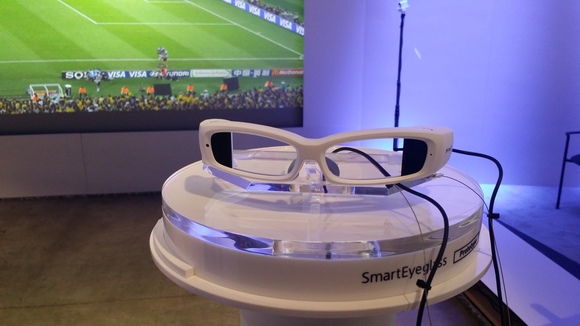
Aside: Oculus Rift has a lot going for it, since virtual reality has been part of science fiction dreams the world over. Of course, there is the practical detail of having to get used to VR experience, but I suppose we will all get used to it at some point, not to mention technology improving to the point of removing “side effects” such as nausea!
Showing the Sony Smart Eyeglass off at CES, the manufacturer sure got some attention – some of it positive, some of it not so good. What no one can deny is the fact that the device is not all that ready for gaming yet. There is also the “small” matter of the display being bright green.
Some of us feel nostalgia when we think of the bright green text display on ancient CRT monitors, but for smartglass technology, that’s not really optimal, is it? Sony says it can be adjusted, though.
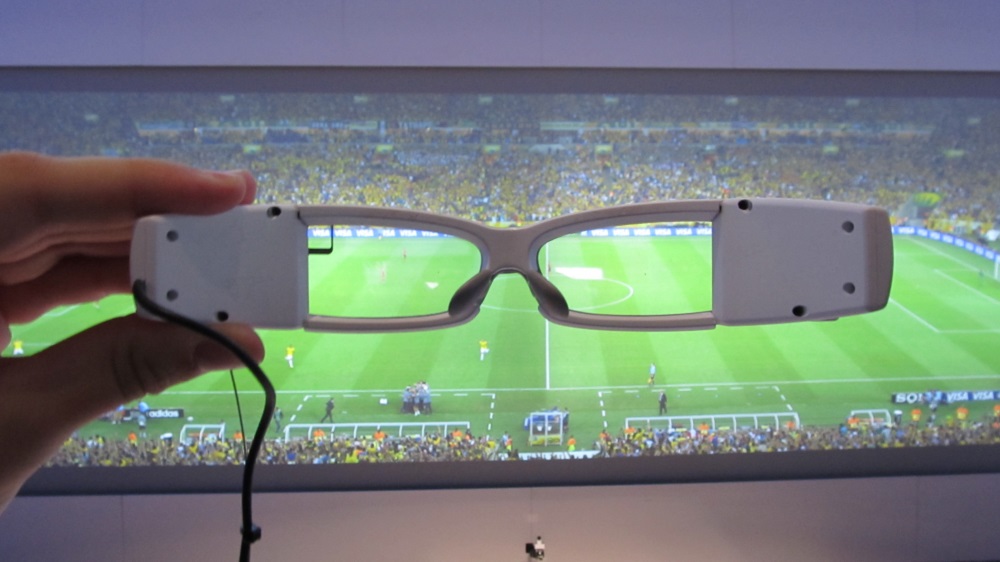
On the upside, critics say that the Sony Smart Eyeglass provides a more “cohesive experience”, combined with the head-mounted display. While it is too early to make predictions, especially since the product is not at 100 percent yet, the mere fact that more players are joining the game says a lot about the future of smartglasses.
Again, this is exciting, but I wouldn’t hold my breath for things to reach the optimal consumer experience level this year.
The post Sony Joins Smartglass Fray With Sony Smart Eyeglass appeared first on TechBeat.
|
|
Posted: 10 Jan 2014 02:00 AM PST
Time is a strange thing. When you’re engaging in a fun activity, minutes and hours just seem to slip by and you’re left left wondering where the time went. Yet on the other hand if you’re stuck in a boring meeting or are made to endure something you really don’t enjoy, then the time drags and what is actually a short period of time, can feel like eternity.
A watch designed by Theo Tveterås and Lars Marcus Vedeler, has been created to draw attention to the difference between our perception of passing time and how it actually passes.
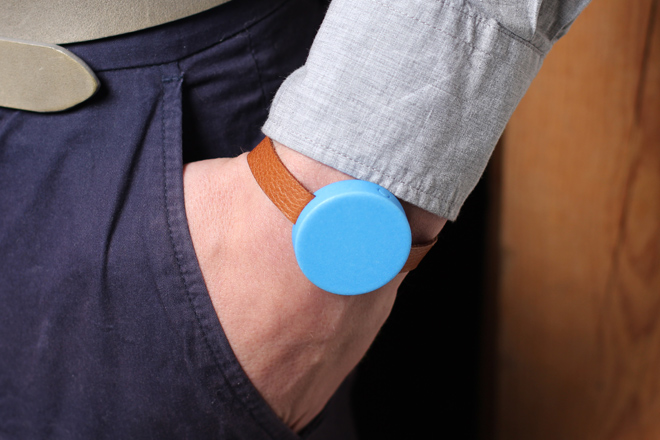
Named Durr, the watch is very simple in design. It is a solid, colourful disk that vibrates every five minues. The Norwegian duo who make up the company Skrekkøgle, were inspired to produce this unusual type of time piece after they realised how fast their days seemed to be passing, especially when they were busy working in the studio.
They knocked together a protype and tested it while out enjoying a few beers. “We were surprised and excited about how tangible time suddenly seemed,” Tveterås says. The duo have now put together something more refined. Inside it is made up of Arduino parts, while externally it is covered with a variety of colourful housings. It is finished with a simple thin leather strap.
The Durr watch’s hardware is as simple as the look. “We like the idea of single-purpose objects,” Tveterås explains. “It has a calmer, more specific purpose than, say, a smartphone or a smartwatch.”
They have found that after wearing the watch for six months, it has added an undeniable “rhythm” to each day, allowing them to look back at the segmented parts of their day and review what they have done.
Not everyone likes to be reminded that time is passing away though. Tveterås explains that they have had “feedback from other people using it that it acts a little like a countdown for life, which wasn’t the intention at all. But the memento mori aspect is very fascinating too.”
You can purchase the Durr watch for around $122.
[Image via Skrekkøgle]
SOURCE: http://www.wired.com/design/2014/01/a-vibrating-watch-that-messes-with-your-perception-of-time/
The post The Durr Vibrating Watch Will Mess With Your Perception Of Time appeared first on TechBeat.
|
|
Posted: 10 Jan 2014 01:00 AM PST
Intel has just unveiled Edison. A new computer which is housed inside an SD card, which has built-in Wi-Fi connectivity and it can support multiple operating systems.
Brian Krzanich, Intel CEO, has said the goal of Edison is to give wearable tech manufacturers a go-to option when they need a computer to power their devices. “Wearables are not everywhere today because they aren’t yet solving real problems and they aren’t yet integrated with our lifestyles,” Krzanich explained. “We’re focused on addressing this engineering innovation challenge. Our goal is, if something computes and connects, it does it best with Intel inside.”
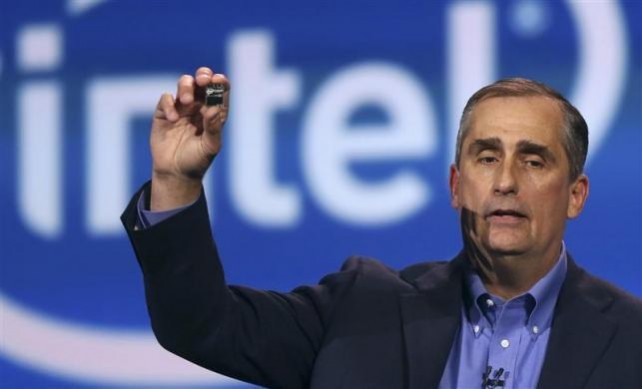
Below is an excerpt from the Intel Press release at CES:
Intel CEO Brian Krzanich demonstrated Intel-developed designs for wearable devices including smart ear buds with biometric and fitness capabilities, an always-on smart headset that integrates with existing personal assistant technologies, and a smart wireless charging bowl.
Krzanich announced strategic collaborations with luxury retailer Barneys New York*, the Council of Fashion Designers of America* and international design house and curator Opening Ceremony* to explore and bring to market smart wearable technology.
He debuted Intel® Edison, a new Intel® Quark technology-based computer housed in an SD card form factor with built-in wireless capabilities and support for multiple operating systems.
Krzanich disclosed a global “call to innovation” campaign with the Intel ‘Make it Wearable’ challenge.
CEO said Intel plans to offer elements of McAfee mobile security products for free to help guard today’s most popular mobile devices and will introduce Intel Device Protection technology this year to improve enterprise security of all Intel-based Android* mobile devices.
He unveiled the Intel Security brand, which will be used to identify all Intel security products and services, and said that McAfee products will transition to the Intel Security brand over time.
Krzanich stated that Intel is the first microprocessor company to support devices that combine the best of Windows* and Android* operating systems in a single device.
Intel Inside Wearable Devices
Krzanich announced Intel® Edison, a new Intel® Quark technology-based computer housed in an SD card form factor with built-in wireless capabilities and support for multiple operating systems. From prototype to production, Intel Edison will enable rapid innovation and product development by a range of inventors, entrepreneurs and consumer product designers when available this summer.
“Wearables are not everywhere today because they aren’t yet solving real problems and they aren’t yet integrated with our lifestyles,” said Krzanich. “We’re focused on addressing this engineering innovation challenge. Our goal is, if something computes and connects, it does it best with Intel inside.”
Increased Data and Device Security
Krzanich also unveiled the Intel Security brand, which will identify Intel products and services in the security segment, and disclosed plans to transition McAfee* products to the Intel Security brand while retaining the familiar red shield.
“The complexity of keeping digital identities safe grows as mobile applications and devices become a more important part of our daily lives,” Krzanich said. “Intel’s intent is to intensify our efforts dedicated to making the digital world more secure, and staying ahead of threats to private information on mobile and wearable devices.”
Krzanich announced that Intel plans to offer elements of McAfee’s award-winning security solutions for mobile devices for free. These data and device protection solutions help guard today’s most popular mobile devices, including Apple* iPhone, Apple* iPad and Android* devices. More details will be announced in the coming months.
As corporate “bring-your-own-device” programs have grown in popularity, many firms have prohibited Android*-based devices that weren’t compatible with their companies’ security requirements. Intel Security this year will offer Intel Device Protection technology, which will help Intel-based Android* mobile devices meet most security standards for use at home and work.
With Raspberry Pi and others on the market already, all we can do is wait and see if Intel can pull it off with this one. One thing is for sure. I will be trying to get my hands on one!
[Image via ibtimes]
The post Intel Debuts SD Card-Sized Computer appeared first on TechBeat.
|
Saturday, 11 January 2014
Pebble Unveils its Second Smartwatch, Pebble Steel
Subscribe to:
Post Comments (Atom)
I have been using AVG Anti-virus for a couple of years, and I would recommend this solution to all of you.
ReplyDelete